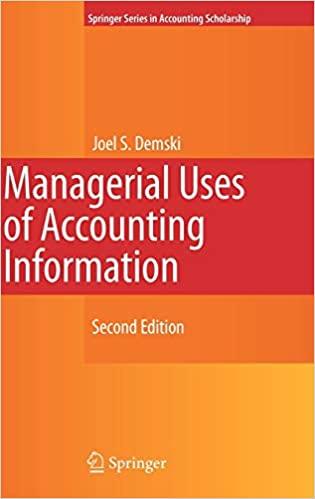17. option value of capacity Ralphs Custom Products (RCP) is a custom manufacturer of material handling equipment.
Question:
17. option value of capacity Ralph’s Custom Products (RCP) is a custom manufacturer of material handling equipment. Various just-in-time manufacturing systems require parts from suppliers that arrive in containers that are specialized to accommodate transportation and handling in the receiving facility. RCP designs and manufactures these containers. A new customer has arrived, seeking a bid on a particular set of containers.
The RCP engineer provides the following estimates:
dept. #1 dept. #2 machine hours required 150 200 direct labor hours required 120 350 cost per hour of direct labor 18 24 RCP uses two manufacturing departments. The direct labor rates include 20% fringe (covering various taxes, vacations, and so on).
Overheads in the two departments are budgeted with the following LLAs: OV1 = 150, 000+14MH and OV2 = 200, 000+45DLH, where MH refers to machine hours in department #1 and DLH refers to direct labor hours in department #2. (Respective normal volumes are MH = 7, 500 and DLH = 5, 000.) In addition, the engineer estimates total direct material cost will be 12, 000 and shipping costs will total 4, 000.
(a) What are the normal, full cost overhead application rates in the two departments?
(b) What is the minimum price RCP should consider in negotiating with this new customer?
(c) How does the cost datum derived in
(b) above relate to the cost that would be reported in the accounting library? More precisely, what product cost would be recorded in the typical accounting library? In turn, by how much would cost of goods sold increase were this product produced and sold?
(d) Now suppose a capacity problem might exist. One of RCP’s usual customers might require some modification of containers in use. If so, taking on the new customer will use up slack in department #2’s schedule that should be devoted to the existing customer base; and if this happens, RCP will be forced to subcontract 200 direct labor hours, at a rate of 150 per hour.
The sales force estimates the existing customer will require this modification with probability α. If RCP is risk neutral, what now is the minimum price it should consider in negotiating with this new customer?
Step by Step Answer:






